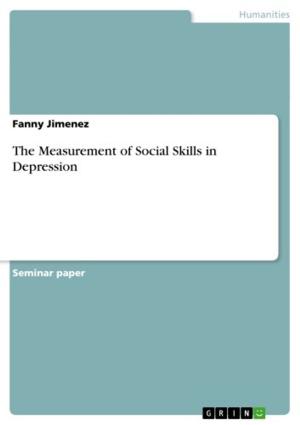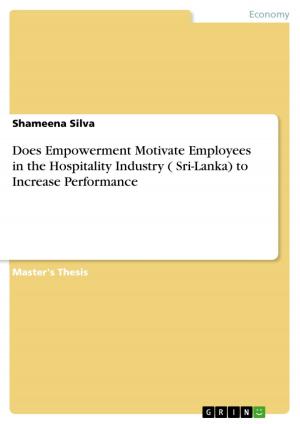The role of the Copts in the national movement in Egypt until the 1919 revolution
Nonfiction, Religion & Spirituality, Middle East Religions, Islam| Author: | Kathrin Nina Wiedl | ISBN: | 9783638470131 |
| Publisher: | GRIN Publishing | Publication: | February 15, 2006 |
| Imprint: | GRIN Publishing | Language: | English |
| Author: | Kathrin Nina Wiedl |
| ISBN: | 9783638470131 |
| Publisher: | GRIN Publishing |
| Publication: | February 15, 2006 |
| Imprint: | GRIN Publishing |
| Language: | English |
Seminar paper from the year 2006 in the subject Orientalism / Sinology - Islamic Studies, grade: 1,3, Ben Gurion University (Middle East Institute), course: Religious and Ethnic Minorities/ Communities in the Modern Middle East, 19 entries in the bibliography, language: English, abstract: During the 1919 revolution, under the slogan 'Egypt for Egyptians', the Copts fought hand in hand with their Muslim brothers for national independence of Egypt from Britain. The banner of the revolution was a cross within a crescent, the ancient incompatibility of Christianity and Islam seemed to be abolished. Only one decade earlier this unity seemed impossible, after the assassination of the Copt Prime Minister Butrus Ghali, the mob in the streets of Cairo had been praising the murder with slogans, such as:' Wasrani (the name of the killer), Wasrani, who killed the nasrani (Christian)'. And the Coptic newspaper Al-Watan had stated in 1908 that 'The Copts are the true Egyptians and the Islamic conquest of Egypt was oppressive'. The role of the Copts in the national movement is as complex and ambiguous as the national movement itself. We have to weight and consider various factors together in order to understand the different roles of the Copts in the movement during this period. We also have to differentiate between Coptic Clerks, fellahin and urban Copts as well as between the Muslim mob and the Muslim leaders of the national movement, latter often influenced by ideas of western enlightenment. This paper will examine the factors that determined the role of the Coptic minority in the Muslim-dominated national movement between its emergence in 1879 and the 1919 revolution from different perspectives. This includes a discussion of the role of the British policy, the question of social integration and juridical equality/ exclusion as a distinguished religious community from the (Muslim) majority, the degree of Islamisation or secularisation of the national movement and the role of sectarian strife between Muslims and Copts, mainly incited by the British policy of 'divide and rule'. Further influences discussed in this paper are the fear of the Copts to be persecuted or isolated if they don't participate in the movement and the chances of the movement to succeed.
Seminar paper from the year 2006 in the subject Orientalism / Sinology - Islamic Studies, grade: 1,3, Ben Gurion University (Middle East Institute), course: Religious and Ethnic Minorities/ Communities in the Modern Middle East, 19 entries in the bibliography, language: English, abstract: During the 1919 revolution, under the slogan 'Egypt for Egyptians', the Copts fought hand in hand with their Muslim brothers for national independence of Egypt from Britain. The banner of the revolution was a cross within a crescent, the ancient incompatibility of Christianity and Islam seemed to be abolished. Only one decade earlier this unity seemed impossible, after the assassination of the Copt Prime Minister Butrus Ghali, the mob in the streets of Cairo had been praising the murder with slogans, such as:' Wasrani (the name of the killer), Wasrani, who killed the nasrani (Christian)'. And the Coptic newspaper Al-Watan had stated in 1908 that 'The Copts are the true Egyptians and the Islamic conquest of Egypt was oppressive'. The role of the Copts in the national movement is as complex and ambiguous as the national movement itself. We have to weight and consider various factors together in order to understand the different roles of the Copts in the movement during this period. We also have to differentiate between Coptic Clerks, fellahin and urban Copts as well as between the Muslim mob and the Muslim leaders of the national movement, latter often influenced by ideas of western enlightenment. This paper will examine the factors that determined the role of the Coptic minority in the Muslim-dominated national movement between its emergence in 1879 and the 1919 revolution from different perspectives. This includes a discussion of the role of the British policy, the question of social integration and juridical equality/ exclusion as a distinguished religious community from the (Muslim) majority, the degree of Islamisation or secularisation of the national movement and the role of sectarian strife between Muslims and Copts, mainly incited by the British policy of 'divide and rule'. Further influences discussed in this paper are the fear of the Copts to be persecuted or isolated if they don't participate in the movement and the chances of the movement to succeed.















